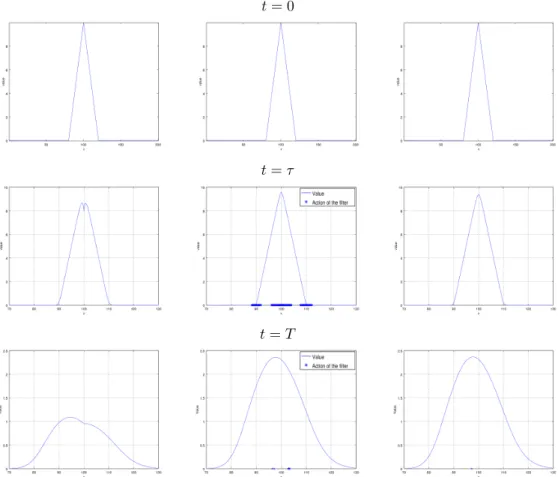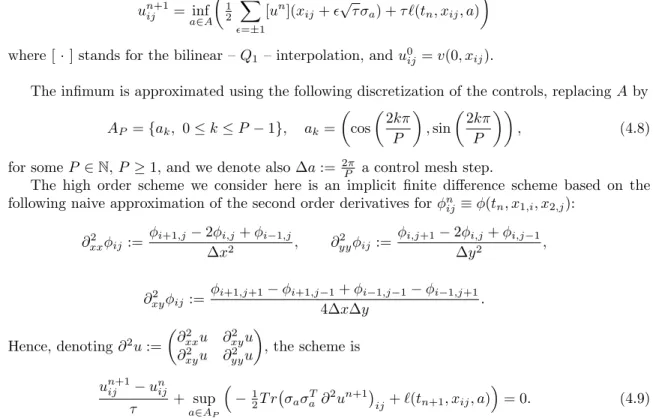High-order filtered schemes for time-dependent second order HJB equations
Texte intégral
Figure


![Figure 5: (Example 2) Convergence rate of the L ∞ -error obtained for ε = c 0 ∆x min and different values of c 0 , us-ing the non uniform mesh defined in [30]](https://thumb-eu.123doks.com/thumbv2/123doknet/14605553.544564/23.918.141.471.153.421/figure-example-convergence-obtained-different-values-uniform-defined.webp)

Documents relatifs
In Section 4, we prove first- and second-order necessary optimality conditions for the transformed (P), which are then translated into optimality conditions for the time
The steps of this approach can be summarized as follows: (i) rewrite the problem in Bellman form, as an extremum of linear equations, (ii) discretize the second order linear
Our goal is to provide with a thorough treatment of nonzero incoming boundary data and to design numerical boundary conditions that recover the optimal rate of convergence in
Unité de recherche INRIA Rennes : IRISA, Campus universitaire de Beaulieu - 35042 Rennes Cedex (France) Unité de recherche INRIA Rhône-Alpes : 655, avenue de l’Europe -
Keywords: incompressible Navier-Stokes equations, vector BGK schemes, flux vector splitting, low Mach number limit, discrete entropy inequality, cell Reynolds number, lattice
In this section we review the concept of partitioned Runge-Kutta methods and derive a new class of semi-implicit R-K schemes, and we propose several schemes up to third order
• Development of high order implicit time schemes for ODEs, application to Maxwell’s equations (conference ICOSAHOM2016 Rio June,
incompressible Navier-Stokes equations, vector BGK schemes, flux vector splitting, low Mach number limit, discrete entropy inequality, cell Reynolds number, lattice Boltzmann
